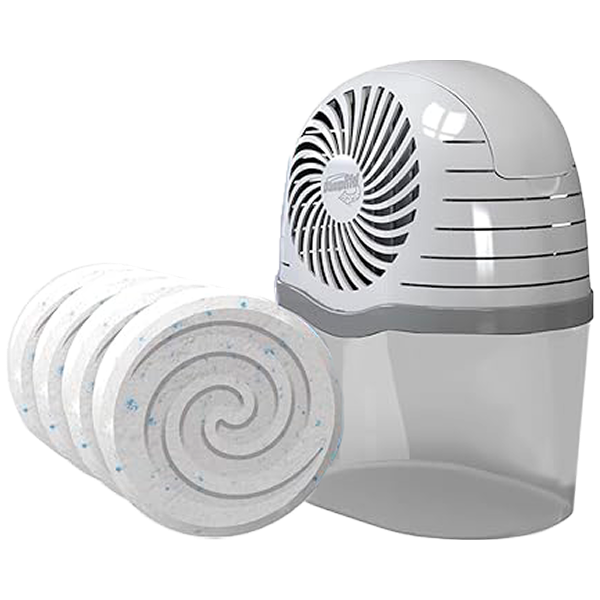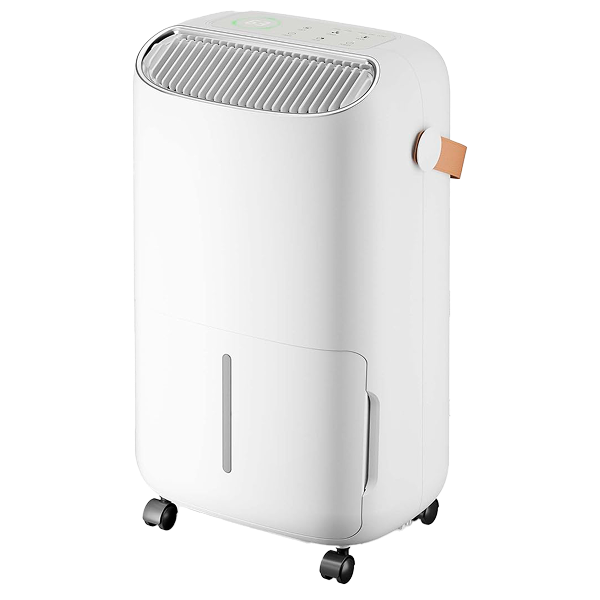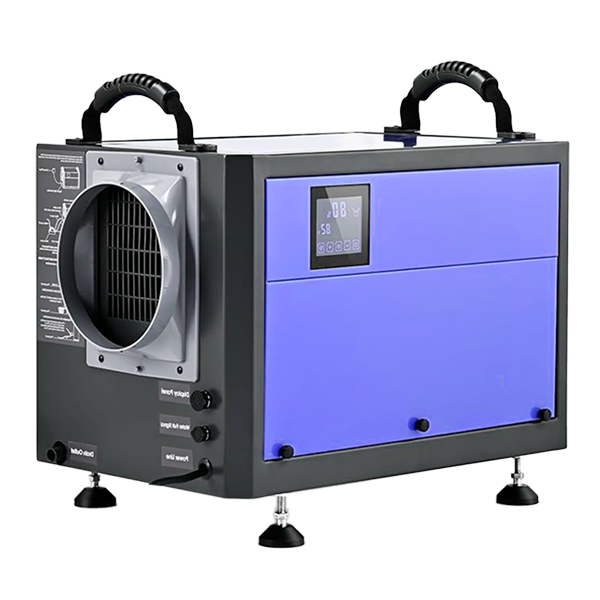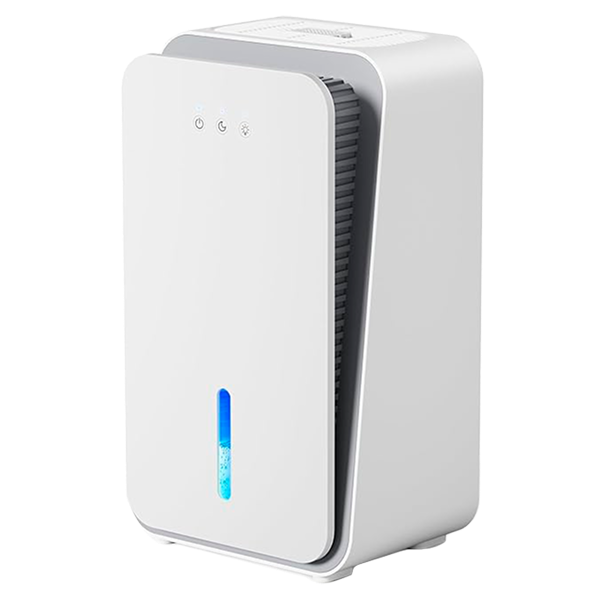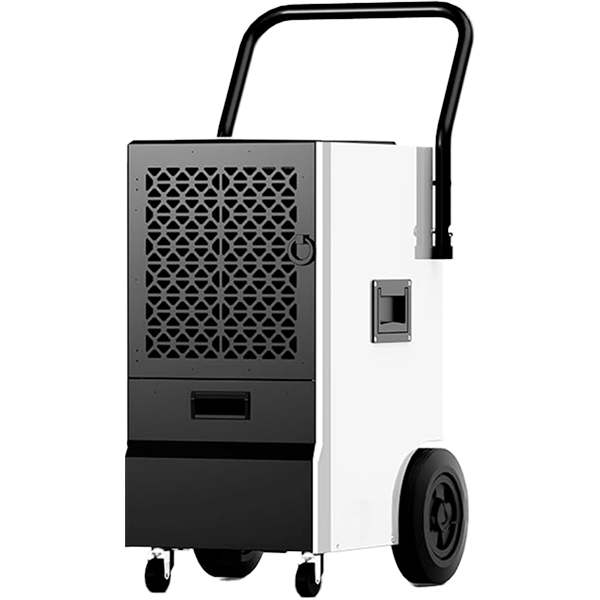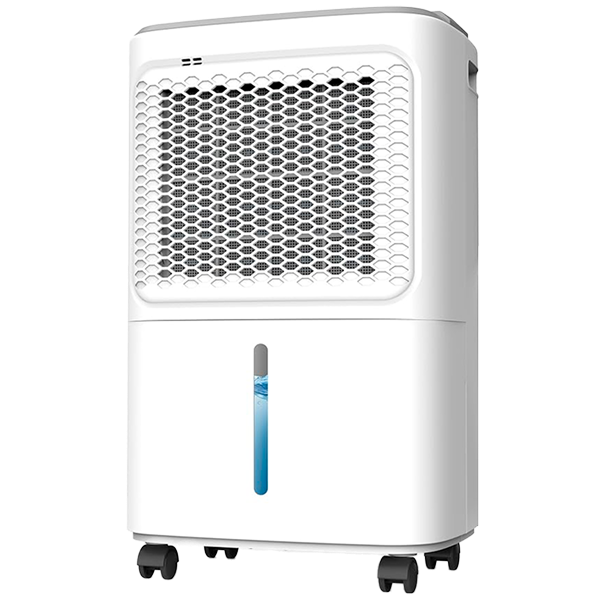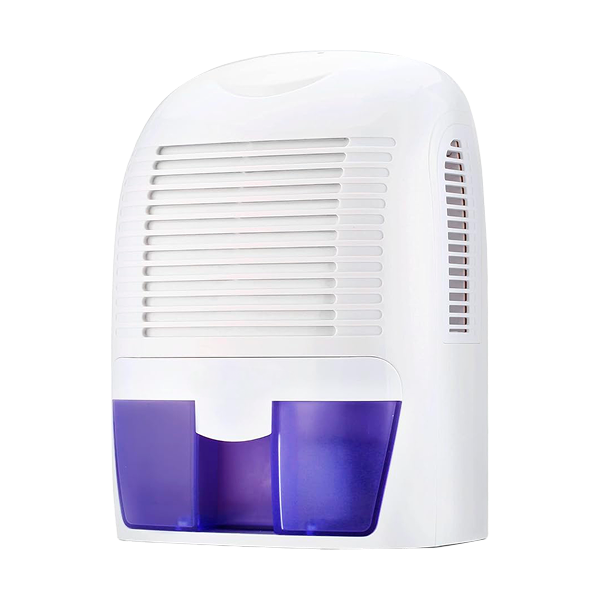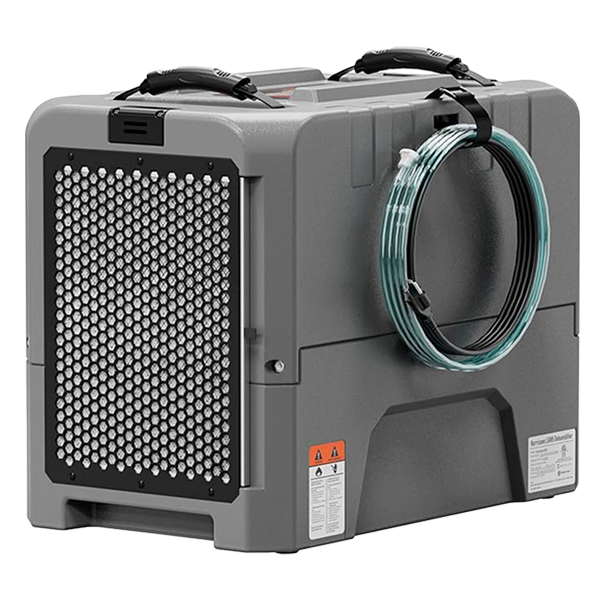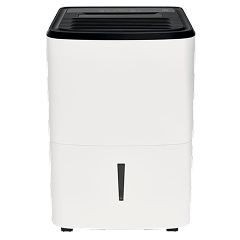Whether you’re restoring a water-damaged basement, managing humidity in a workshop, or battling mold in a warehouse, commercial dehumidifiers offer the robust performance required for demanding spaces.
These heavy-duty machines outpace domestic models in extraction capacity, durability, and coverage. In this guide, we’ll break down what to look for – from tank sizes and coverage areas to defrost indicators – so you can choose the best unit for your space and needs.
For a broader overview of dehumidifier types, common household scenarios, and leading brands, see our general dehumidifier buyer’s guide.
Moisture Extraction Capacity (L/24h)
This is the single most important metric when choosing a commercial (or any) dehumidifier. It defines the amount of moisture the machine can remove from the air in 24 hours.
- 20–30L/day – Suitable for smaller offices, home workshops, or post-flood rooms up to 100–150 m² with moderate dampness.
- 30–50L/day – Ideal for drying construction sites, large basements, or dealing with long-term water ingress issues.
- 50–70L/day – For persistent high-humidity problems in storage areas, gyms, or damp-prone extensions.
- 70L+/day – Best for industrial or emergency drying applications, including flood restoration or large-scale commercial spaces (e.g., warehouses, server rooms, or manufacturing zones).
Consider ambient temperature when comparing extraction ratings – most commercial units provide specs at 30°C/80% RH, but efficiency drops at lower temperatures.
Coverage Area
Coverage is all about air volume and layout. Always check if the model you’re considering is powerful enough for your intended room size. Consider whether your space is open-plan and if the dehumidifier is powerful enough to extract humidity in hidden spots and corners.
- Up to 100 m² – Good for small offices, server and storage rooms and enclosed basements.
- 100–300 m² – Efficient in workshops, laundromats, retail stockrooms, or large domestic areas.
- 300 m²+ – Recommended for industrial spaces, warehouses, event halls, or venues with high ceilings and poor ventilation.
If your space includes multiple rooms or separate areas, consider the airflow dynamics and whether a single central unit will suffice.
Tank Capacity
The water collected from the air is stored in a built-in tank. A larger tank means fewer trips to empty it, but also takes up more space. Most commercial dehumidifiers prioritise continuous drainage over tank storage, but if you prefer a built-in water reservoir, here’s what to expect:
- <5L – Requires frequent emptying; only viable if you monitor it closely. With a dehumidifier with this tank capacity, you’ll most likely be using the drainage hose frequently.
- 5–10L – Standard for mid-capacity units; offering a good balance of portability and capacity.
- 10–15L+ – Better for less accessible installations or intermittent use without a drainage setup.
The Auto Shut-Off feature is essential to prevent overflow if the tank fills.
Drainage Options
- Continuous Drainage – A plastic tube attached to the dehumidifier, which allows for non-stop operation. It’s a must-have for most commercial environments.
- Gravity Drain vs. Pump Drain:
- Gravity requires a floor-level drain.
- Pump-assisted models can discharge vertically – ideal for basements or when drainage is elevated.
Portability Features
Despite their rugged design, commercial units aren’t always fixed in place. Choose based on your space and portability needs:
- Wheels – Standard in most large models. Look for rubberised or lockable casters for secure use on uneven floors. Some units might have 360° rotatable wheels, while large, sturdy wheels with thick tyres are always recommended.
- Handles – Make lifting safer; important for delivery teams or jobsite movers. Check how big the handles are and whether you’ll be able to use them with protective gloves on.
- Cable tidy – Minimises tripping hazards and protects the cord during transit or storage.
- None – Fixed-install models meant for semi-permanent locations.
Build Quality & Durability
Because of the unit’s intended placement, it must withstand demanding environments. Therefore, it’s recommended to check the following before purchase:
- Tank Material – Look for high-impact plastic or stainless steel for longevity.
- Frame – Powder-coated steel or industrial-grade plastic housing improves resilience.
- Ingress Protection (IP) Ratings – Some models are dust-resistant or splash-proof – important for workshops or garages.
Filter Type & Access
Filters protect internal components and may purify air. Although these are less common with commercial units, key types include:
- Washable Mesh Filters – Easy to maintain and reuse.
- Antimicrobial/Activated Carbon Filters – Reduce mold spores or odors in flood-damaged spaces.
Filters require regular cleaning or replacing, especially in dusty environments (construction, woodworking, etc.). Calculate the costs of replacements and the work connected to filter cleaning.
Humidity Control & Display Features
- Digital Humidistat – Enables precise humidity control, ideal for preservation environments.
- Traffic Light Indicator – Glance feedback (Green = Good, Amber = Caution, Red = High).
- Auto Restart – Resumes settings after power loss—critical in unsupervised or remote installations.
- Auto Defrost – Essential for refrigerant models used below 15°C. Prevents coil freezing and maintains performance.
Noise Level
Not all commercial models are noisy, but they generally make more noise than domestic dehumidifiers. Just like with any other home appliance, don’t expect them to be silent.
- <50 dB – This level of noise is comparable to a dishwasher or a busy street. Quiet enough for offices, galleries, or noise-sensitive environments.
- 50–60 dB – The sound level of moderate rain or normal conversation. Standard for heavy-duty models; tolerable in utility spaces.
- 60 dB+ – Acceptable in garages, construction sites, or unmanned basements. Best used in spaces where noise isn’t a concern or if you’re planning to only run it when you’re not at home.
Energy Efficiency & Power Consumption
Energy use scales with capacity. Keep an eye on:
- Rated Power Consumption (W) – Higher wattage = faster drying, but higher costs.
- Energy Efficiency Ratio (EER) – Moisture removed per watt used. Higher is better.
- Timer/Scheduling Options – Reduce operating time to peak humidity periods.
- Eco Modes – Lower fan/compressor speeds during standby.
Environmental Considerations
- Refrigerant Type – Opt for eco-friendly R290 (propane-based) over older R134a types.
- Operating Temperature Range – Refrigerant models may struggle under 10°C unless defrost systems are optimised. For cold settings, consider a desiccant dehumidifier instead.
Smart Features & Safety
- Wi-Fi App Connectivity – Allows remote monitoring which is useful for unoccupied or off-site spaces. Although more common with domestic models, some commercial dehumidifiers might support Wi-Fi or Bluetooth.
- Auto Shut-Off – Standard safety mechanism if the tank fills unexpectedly.
- Child Lock – Useful in commercial settings open to the public (e.g., retail, daycares).
Dimensions & Weight
While you might not consider the dimensions and weight of domestic dehumidifiers as much, these details are more important in commercial units.
- Dimensions – Consider whether the unit will fit through doors, into lifts and openings.
- Weight – Ensure that the people operating the unit will be able to lift and transport the dehumidifier as needed.
Extra Features (Use-Case Dependent)
Ideal Scenarios for Use
- Post-Flood Recovery – Look for 70L+/day with pump drainage and antimicrobial filters, as there may be mild mold and mildew build-up on the surfaces and walls.
- Construction Drying – Durable casing, wheels, and timed scheduling help control moisture on-site.
- Warehouses/Storage – Large coverage, low-noise models with accurate humidistats protect stock and aren’t too disruptive with people around.
- Basements & Workshops – Models with continuous drainage, auto restart, and low-temp operation are essential to ensure optimal performance in cold and damp environments.
Leading Manufacturers Overview
When it comes to choosing the right commercial dehumidifier, brand reputation can be a reliable indicator of performance, customer support, and build quality. Here are some of the top manufacturers and what sets them apart.
Costway
Best for: Budget-friendly commercial performance | Simple setup
Costway offers affordable large-capacity dehumidifiers focusing on ease of use and high moisture extraction. Their commercial models are popular among homeowners and small businesses needing heavy-duty performance without the premium price tag.
Key highlights:
- High extraction rates (up to 50–70L/day) at competitive prices
- Basic but functional features like auto-defrost, wheels, and timers
- Good for garages, workshops, and water damage recovery
- Often available via major online retailers
Cons: Limited brand recognition and post-sale support compared to premium brands; controls and build may feel less refined.
Trotec
Best for: Industrial-grade reliability | Construction and flood recovery
Trotec is a German manufacturer known for professional-grade environmental control equipment. Their commercial and industrial dehumidifiers are frequently used on construction sites, during flood restoration, and in logistics or storage facilities.
Key highlights:
- Rugged design with metal housings and stackable frames
- High extraction models (70L+) with built-in pumps or hose drainage options
- Trusted for 24/7 use in demanding environments
- Optional HEPA filters and advanced monitoring tools are available
Cons: Premium pricing; some models are overpowered or oversized for more casual use.
Senelux
Best for: Compact commercial use | Lightweight mobility
Senelux offers compact commercial units with decent extraction power and lightweight builds, making them suitable for small warehouses, utility rooms, or frequent relocation needs. Their units strike a balance between portability and commercial-grade specs.
Key highlights:
- Mid-range extraction (30–50L/day) in a relatively compact form
- Affordable and often lighter than similarly specced models
- Good airflow and digital controls for basic humidity management
Cons: Fewer smart features; may lack the rugged durability needed for heavy-duty industrial use.


